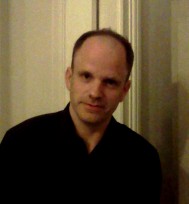Nature versus machine: a locomotive covered with butterflies. It seems like an obvious opposition, but in the first half of the 19th century in Paris, philosophers saw them as partners. Machines were not dead objects but a way to express nature and help humankind.
Associate Professor of History and Sociology of Science John Tresch’s new book, The Romantic Machine: Utopian Science and Technology after Napoleon, describes how this unusual union came about. The Enlightenment had come to be seen in its most stripped-down version—mechanical, rational, orderly. Napoleon had “a very efficient machine of state,” says Tresch, with huge, centralized administrations, and schools to train engineers, scientists and administrators. The Germans, partly in reaction to their forced inclusion in the Napoleonic empire, developed romanticism, which urged men to return to nature, to grasp a transcendent truth.
But new kinds of machines were coming onto the scene from England, such as steam engines and industrial manufacturing. These literal machines played a real role in the lives of people and, by supplying the British troops, in the defeat of Napoleon—and in creating a culture which embraced and united technology and nature.
In Paris following Napoleon’s defeat, thinkers addressed the problem of how to recover from the long upheavals since the French Revolution and build a state based on freedom, one with a moral understanding. New communication between France and the rest of the world brought not only romanticism but information about eastern religions and mysticism. France was looking outward, trying to understand cultures worldwide and building new networks of railroads and canals.
Paris was the center of knowledge and of the arts, and in the close proximity of the city, the two interacted: scientists listened to poets and artists learned from engineers. Astronomers, says Tresch, didn’t just map the heavens but created “a landscape and a narrative that puts you in the night sky.” At the same time, artists were trying to determine “the material supports, arrangements of sound, color, objects that will produce a very specific mental effect.”
What the mechanical romantics believed, he says, was that it didn’t make sense to go back to nature. “That period’s gone. But what it does make sense to do is evaluate how machines relate us to that world, what technologies we’re using, the effect that we’re having on our environment. We can critique the ways we use technology, and think about positive ways to use it.” He compares it to gardening, deliberately choosing and shaping technology.
Some of this—the awareness that machines are necessary and helpful at the same time we worry about loss of humanity and a separation from nature—sounds familiar. “We are of two minds on this question,” says Tresch of the 21st century. “We depend on machines to make us who we are. Sometimes that’s taken for granted, but sometimes it's uncomfortable. And there’s a feeling that some things shouldn’t be decided through automatic or impersonal techniques alone.
“Showing us all the relationships that humans make with their world via their technologies, via their conscious social organizations, makes it possible to say, well, we might be able to organize this differently,” Tresch says. “A better world might be possible.”



